As at September 2022
Equity Market Returns
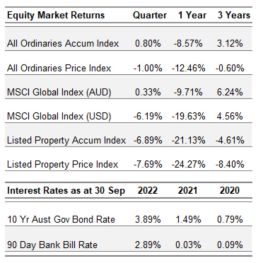
Source: IRESS
Equities markets turned down from mid-August as interest rates rose globally. Inflation remains high in developed countries and well outside central bank targets. The proximate causes are attributed to: supply chain disruptions and shortages of labour post COVID-19 and energy and other commodity price shortages resulting from the Ukraine war.
In response to the outbreak of inflation, central banks have tightened monetary policy after a long period of extremely accommodative conditions. The actions of the Federal Reserve* over the last year, in raising rates and curtailing the bond buying that has gone on for much of the last 13 years, marks an end of a very long era of cheap money. A difficult path to a more conservative monetary policies has, belatedly, been embarked upon. In fiscal policy (government deficit spending) no such return has yet been commenced. This pattern is replicated in Australia and most developed economies.
The corollary to these developments, in PPM’s view, is that the excessive valuations that have been present in much of the equities markets and indeed in other asset markets will continue to be under pressure until they have reverted to more normal levels. It is possible that as the pendulum swung far in one direction it will also swing far in the opposite direction. In the sectors that were most overvalued we feel that the pendulum has at least passed its neutral point.
During this past era the notion of valuation in the assessment of investments was a great hinderance to being well regarded. A change in environment of the magnitude that has just occurred, means that much of what had become common practice should be discarded utterly; investing is more in favour and aggressive speculation is not!
Over the last year or so we made the observation that there were many areas of the market where pricing had remained attractive. We continue to hold this view about manufacturing, pharmaceuticals, financial services and healthcare. Now this has been joined by some of the previously high-flying sectors.
Energy we feel offers great opportunities, though some careful thought about current assumptions and dogma is required. The transition to solar and wind power in developed country electricity systems is going to absorb an enormous amount of capital over a short period of time. Effectively it involves replacing a large portion of existing generating capacity (in the case of Australia about 60-70%) with new capacity which has vastly different characteristics. If an adequate return on this capital is to be produced a very much higher price will have to be paid by consumers and industry (one would hope that those investing would be doing so with the expectation of a return on their client’s capital!). The deployment of this amount of capital will throw up some great opportunities, but there will also be some situations to be avoided.
In the Australian market energy stocks have done particularly well for obvious reasons. We are looking at where we should position the portfolios for the longer term as the current conditions, while attractive may not be so indefinitely. We are conscious of the wider risk to the economy in general of the transition in terms of reliability and most importantly the cost of power (as has been seen in the UK, Europe and in California).
In the global markets we have increased our investment in health services particularly in hospital operators, pathology services and in surgical equipment (robotics). We think the pricing of investments in these areas is very attractive and additionally in surgical equipment there is an attractive growth path. The dramatic increase in labour costs for hospitals, as a result of COVID-19, is starting to dissipate and we think that this offers a good opportunity as they return to more normal operating margins.
At the defensive end of the spectrum, it is encouraging that investors are now earning something on their cash and fixed interest. The opportunity to move partly away from a heavy a reliance on more risky growth assets we feel is welcomed by certain clients. We would caution against lengthening maturities too much though, as current interest rates are only a slim margin over the inflation targets set by central banks, despite rates being at unimagined levels a year ago – a big comfort to the earlier generations, as a number have ruefully commented!
To re-iterate our view that markets do not value investments in a consistent way at any point in time. Contrary to the “efficient market theory” large discrepancies exist, and investing is finding those discrepancies.
*A copy of the US Federal Reserve Chairman’s address at their annual conference in August is on our website. It is short and very direct.
International Equities
International Equities Performance
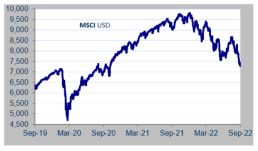
Source: MSCI
Global markets rose 0.33% for the quarter but fell 9.71% for the last 12 months, as measured by the MSCI (a global index of stocks), in Australian dollar terms.
The decline in prices of stocks in the technology sector and medical devices has been so large in the last twelve months as to make many attractive again. They can again be looked at from the perspective of the investor rather than just going with the momentum and the story. As a group, the return on capital is very high indeed, but at the prices of twelve months ago the return to the investor was very low – this has now changed substantially. The declines in the major tech stocks have not been as great as it was post the last major bubble (March 2000) where companies like Microsoft, Amazon and Cisco Systems declined over 80%, but we think that the situation is slightly less severe than it was 20 years ago. It is also now nearly a year since these stocks peaked, a similar period of decline to the 2000 period. As the valuations are now attractive in our view we are starting to invest.
In the tech sector we have been buying Microsoft, Amazon and Nvidia. The last stock is perhaps not as well known to investors as the first two, which are of course household names, unless you are a teenager keen on video games. Nvidia is known to this demographic as the dominant producer of high-end chips which are essentially for video games. There is a lot more to Nvidia now than its early gaming success; the chips, which are extraordinarily powerful also dominate high performance applications such as artificial intelligence and machine learning applications in data centres, which are so vital to commerce. This later application has grown at an average rate of over 40% p.a. over the last three years. The share price of Nvidia reached over US$340 last year but hit a low of US$120 in the last week of the quarter – this changes the economics for the investor. As is common in the sector, Nvidia has substantial net cash holdings.
In the recent past we have made investments in the healthcare sector in mature industries such as the hospital operator Universal Health Services and Quest Diagnostics. The former has had a difficult period as the labour costs and shortages (particularly for nurses) have risen sharply causing earnings to come under pressure. This disruption to what had been a very stable return on capital going back a long way is starting to dissipate. In the last two quarters the elevated labour costs have retraced nearly 50% of the COVID-19 related increases; some way to go but a good start. Where appropriate we have added to exposures at what we regard as an extremely attractive price. It is interesting to compare the pricing of the two stocks mentioned with equivalents in the domestic Australian market, where valuations are more elevated.
In addition to the above we have started to buy what we think is a great company in the Healthcare sector; it has previously been too expensive to give us an adequate underlying return on capital but since the beginning of this calendar year the price has declined approximately 50% presenting us with an opportunity. Intuitive Surgical is the leader in robotic surgery; margins are very high and growth in demand is also high. We were a little put off by the rather ghoulish appearance of the robot so one of PPM’s portfolio managers was delegated to road test the machine. He reports that he slept soundly through the operation and that the recovery period was much shortened with reduced risk of infection. These are characteristics we assess are beneficial to hospital operators as they improve the utilisation of labour and hospital assets.
We have reduced our exposure to Merck, a large global pharmaceutical company, a little to accommodate the new investment. Merck is the owner of Keytruda, the leading immune-oncology drug, which now represents a very large proportion of Merck’s revenue. The patent lasts until 2028, and enhancement may extend the life of the drug for a period, however, it is unlikely that they will have another blockbuster of this magnitude in the existing timeframe.
For different reasons, our views of the auto manufacturer VW are souring. The spin-off of Porsche was disappointing as it was a great opportunity for VW to fund its capital expenditure program at a low cost; unfortunately, internal conflicts lead to the opportunity being forgone. We retain the view that the company is undervalued, but the governance practices are not what we would regard as satisfactory from the portfolio investor’s perspective.
Australian Equities
Australian Equities Performance
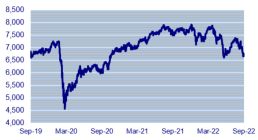
Source: IRESS
The Australian equity market rallied in the first half of the September quarter only to give back most of the gains in the second half. For the quarter, the All Ordinaries Accumulation Index finished up 0.8% and down 8.57% for the last twelve months.
While interest rate rises may provide some headwinds for sectors of the market there has already been a decline of substantial proportions in the extremely high valued parts of the market. We believe that a focus on value will continue to throw up attractive investments despite the less supportive economic environment. The effects on markets are not uniform; while there has been a crisis in European energy markets there has been a boom for suppliers in Australia.
The energy sector has clearly been impacted by the war in Europe, resulting in some energy commodities reaching record high prices, however, even before this landmark event upward pressure had been building following the decline in development expenditures and the continuing growth in demand in Asia and other developing economies. The Ukraine war brought these forces into stark relief.
Prices of energy stocks, in the circumstance that developed over the last twelve months, was extremely low. In the holdings in the portfolios free cash flow yields were above 50% which enable these companies to pay extraordinarily high dividends – on cost price this year they have been of the order of 30-40%. Given the immediate outlook we see these dividends continuing in the current year. The transition of the energy systems will we feel throw up opportunities and it is an area of focus for PPM’s portfolios. This extends to the construction of infrastructure: transmission, firming power, and the financing of infrastructure, all of which will have to occur at scale.
It will also require a lot of thought about sectors that may be under threat if they cannot pass on cost increases in power. The obvious areas are manufacturing industries that are exposed to global competition.
In the search for unloved and potentially undervalued sectors we have been looking at the consumer stocks JB HiFi and Harvey Norman. Despite strong trading performance, investors have marked the stocks down, presumably on the view of an economic pullback. Whether this transpires or not and how deep it might be is an imponderable. The question that we are trying to assess is whether the price declines in stocks such as JB HiFi and Harvey Norman reflect sufficient negativity. Our contention is that the good will improve their market position in difficult times.
JB HiFi has delivered an outstanding set of trading results, starting during the early stages of the pandemic, and continuing through its latest earnings report. FY22 built on strong performance the previous year, with sales growth up 3.5% despite the impact of lockdowns; net profit after tax reached a record $544 million.
Notable has been the company’s ability to focus efforts towards online in a period when physical stores were hampered by lockdowns. For FY22, online sales surged 52.8%, representing 17.6% of total sales. Importantly, the company has been able to do this while maintaining a healthy profit margin: earnings before interest and tax increased 0.27% to 8.61%
Harvey Norman has also produced strong numbers, which are more accurately viewed over a 2-year period because of a larger impact to the business from lockdowns. When viewed in this context, of total sales of $9.5 billion the company delivered after tax profits of $811.5 million, down 3.6% from the previous year but up a solid 68.9% from 2 years ago.
James Hardie, a building products stock, may be thought of as cyclical and hence at risk from a significant economic downturn. Interestingly, we would point to the fact that the repair and remodel market which now represents approximately 65% of the company’s sales is inherently less cyclical. Most recent quarterly results show top line sales growth of 19%, delivering net income growth of 15%. In its key North American market, the company remains growth orientated, and we see it well positioned to capture further market share. As with all investment there is the question of price; after a fall of nearly 50% we are starting to think that a lot of bad news is already absorbed and that we can get our target +10% underlying return.
Interest Rates
90 Day Bank Bill (%) vs 10 Year Bond (%) Performance
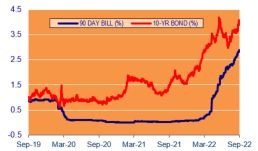
Source: IRESS
The change in monetary policy over the last twelve months have been the most dramatic shift since the GFC thirteen years ago. The “unconventional” policies that were then deemed necessary have been abandoned.
In September the Federal Open Market Committee (FOMC) of the US Federal Reserve, increased the Federal Funds target rate for the fifth time by 0.75% per cent to a range of 3.0-3.25% as it continues its efforts to dampen inflationary pressures. The Committee anticipates that further increases in the target rate will be occur. In addition, it confirmed that it will continue reducing its holdings of Treasury securities and other similar assets as Quantitative Easing is reversed.
The Bank of England’s Monetary Policy Committee (MPC) met shortly after the FOMC meeting and raised the Bank Rate by 0.5% to 2.25% and it also noting its intention to reduce its stock of purchased UK government bonds. However, within a few days the UK Government announced a “mini budget”, which was actually a massive change in fiscal policy and resulted in triggering chaos in the UK bond market – the Bank was forced to reverse its stated intentions of a few days earlier and intervene to stabilise the bond market. As a short-term stabilisation measure the Bank will resume buying long-dated government bonds.
Around the world central banks have been raising interest rates (even Switzerland now has a positive interest rate), but it might be observed that interest remain low by historical standards even under the assumption that central bank inflation targets (2-3%) are met.
The Reserve Bank of Australia (RBA) surprised the market at its October meeting increasing the cash rate by only 0.25% to 2.60%. This was below expectations, but further rate rises are anticipated as the “Board remains resolute in its determination to return inflation to target and will do what is necessary to achieve that.”
As a consequence of the RBA rate increases the 3mth Bank Bill Swap Rate (BBSW) is 3.09% and 6mths 3.59% up from 1.82% and 2.68% respectively at June 30th.
Property (REITS)
ASX Property Graph
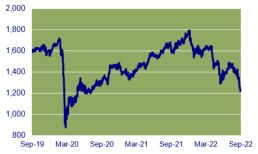
Source: IRESS
The Australian property index was down 6.9% for the quarter and down 21.1% for the last twelve months. The comparison of property yields to fixed interest yields has deteriorated over the last year and this has placed pressure on the price of listed property trusts and companies.
As can be seen (with a magnifying glass) from the chart below, falls occurred across the range of non-residential property with the hardest hit being earlier market darlings Centuria Capital Group, Charter Hall Group and Goodman Group. The chart is over the period from the beginning of 2022 ranges from minus 55% on the left to minus 17% on the right.
YTD Share Price Movement
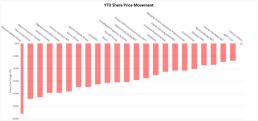
Source: S&P Capital IQ, ASX
The portfolios have focused on non-discretionary retail and high yielding office assets.
We feel that large format retail property remains challenged by their exposure to discretionary retailers. However, the exposure to HomeCo Daily Needs REIT (HDN), a neighborhood shopping centre portfolio, with less exposure to discretionary retail we think is the well placed. HDN has low site utilization, which offers potential for future redevelopment and rental growth. There is also an element of rent that is inflation linked.
With the office sector cycling pre-COVID leases we are cautious about the immediate future. Incentives, although stabilizing, remain elevated at around 30%. There appear to be two competing forces that impacting the office sector, while some corporates seeming to have accepted a hybrid work model, others are trying to attract their employees to come back to the office. Part of attracting workers back to the office is by having a good location and fit out. This has created a flight to quality at the expense of lower grade offices. Our holding in Elanor Commercial Property Fund (ECF) is defensive; the yield is high (approx. 10%) and locations are convenient for certain groups of workers. The manager has been effective in optimizing leasing opportunities.
PPM is continuously looking for ways to improve the service we provide to you and your feedback is important to us. We hope are staying safe and healthy. Please contact Jill May, Head of Client Relationships with any questions, comments or suggested improvements at jm@ppmfunds.com or on (02) 8256 3712.
Private Portfolio Managers Pty Limited ACN 069 865 827, AFSL 241058 (PPM). The information provided in this document is intended for general use only and is taken from sources which are believed to be accurate. PPM accepts no liability of any kind to any person who relies on the information contained in this document. The information presented, and products and services described in this document do not take into account any individuals objectives, financial situation or needs. The information provided does not constitute investment advice. You should assess whether the information is appropriate for you and consider talking to a financial adviser before making any investment decision. Past performance is not necessarily indicative of future returns. © Copyright 2021 Private Portfolio Managers Pty Limited ABN 50 069 865 827, AFS Licence No. 241058.
Your Investment Management Team

Hugh MacNally
Portfolio Manager,
Executive Chairman

Peter Reed
Portfolio Manager,
Director
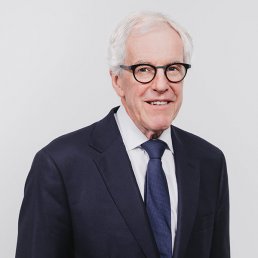
Ian Hardy
Portfolio Manager,
Director

Franklin Djohan
Portfolio Manager

Max Herron-Vellacott
Analyst

Neil Sahai
Dealer / Analyst